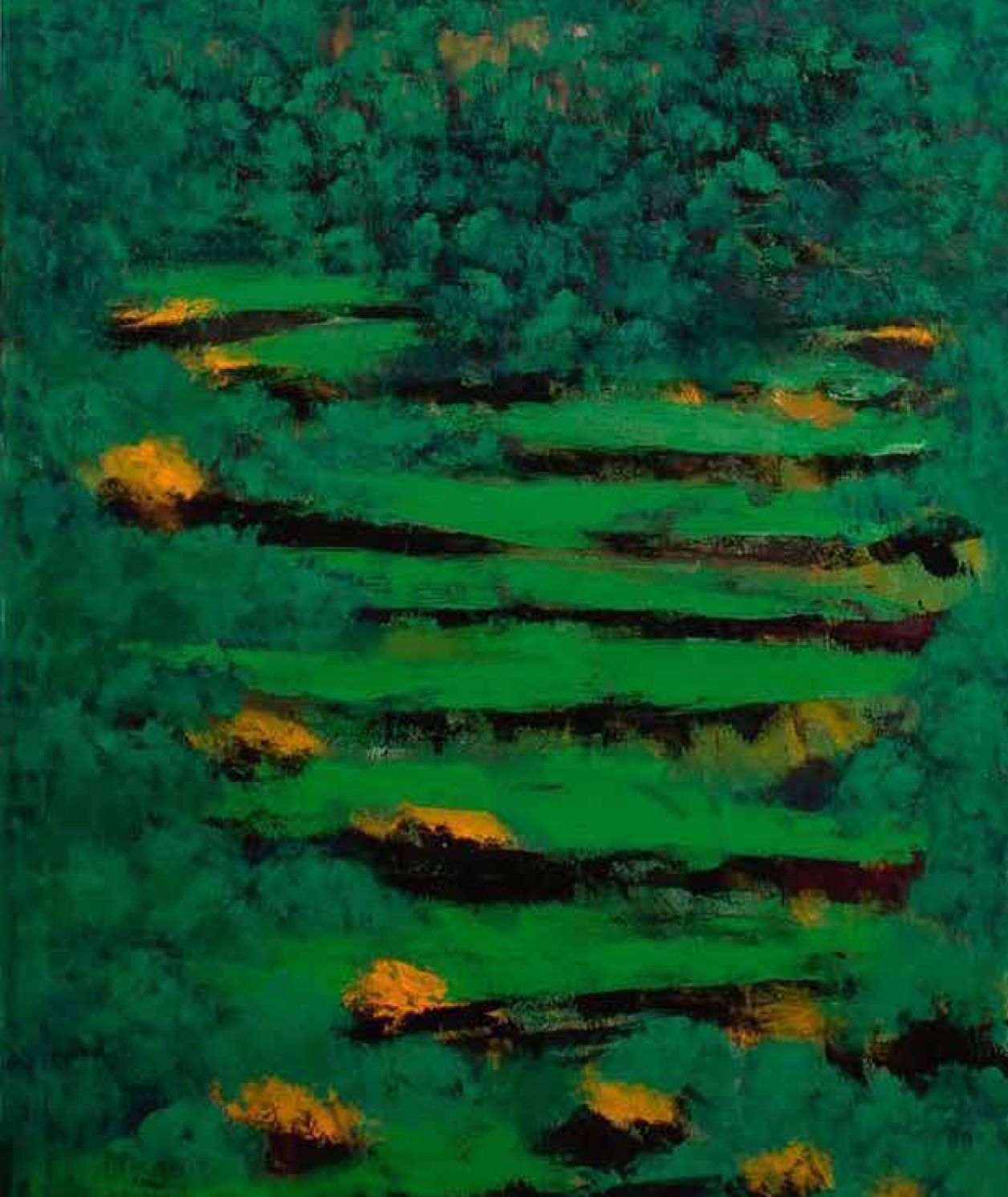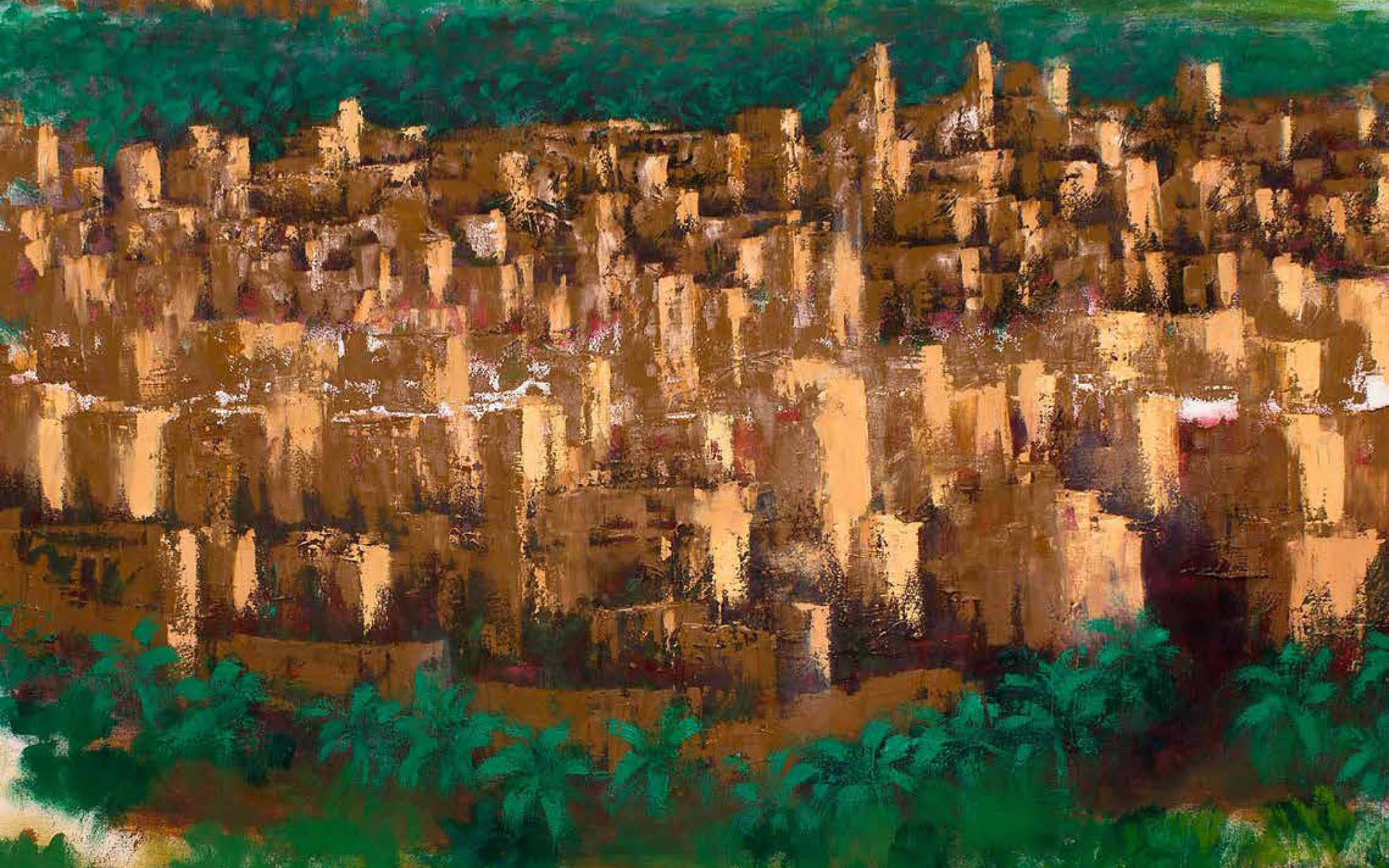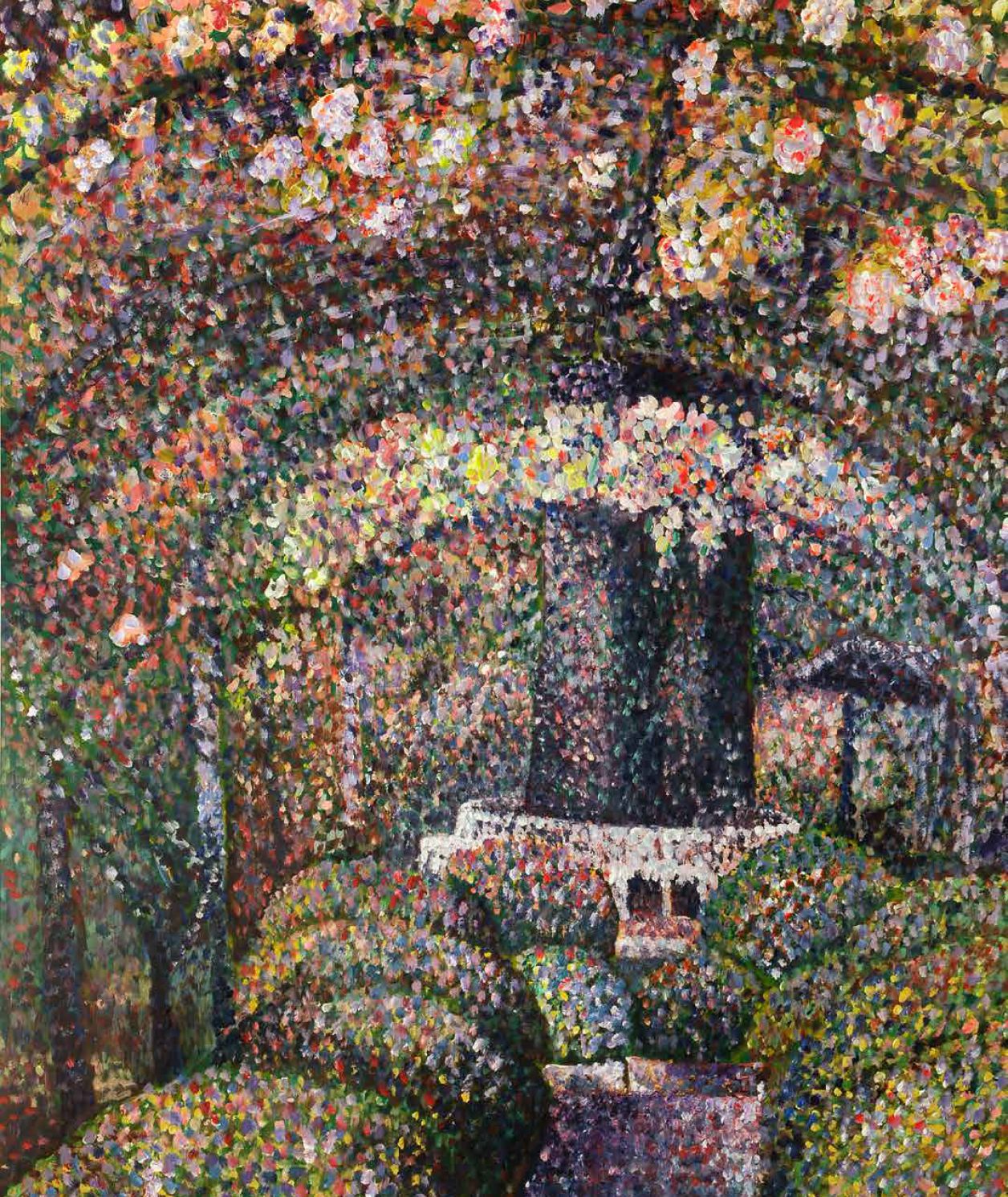A Prince and his Beloved
Folio from the Manuscript of Kulliyat, (Collected Works) of Sa`di (d. 1292) India, Agra, ca. 1604. Opaque watercolor, ink, and gold on paper.
© The Aga Khan Museum, AKM284.21.
Gardens and floral imagery are enduring themes in Islamic art,poetry, and literature, and a continuous source of inspiration for artists and poets. They have been present throughout Islamic art not only for their decorative aspect but also as a means to prompt spiritual reflection and to convey various human emotions. This folio featured here comes
from a manuscript of the Kulliyat—collected works of verse and prose— of the celebrated 13th century Persian poet Sa‘di. It was made around 1604, at the Mughal court of India, where more than one hundred artists from many different religious and ethnic backgrounds were employed in the courtly manuscript workshop.
who is waiting in a garden pavilion. The poetry around the painting includes several examples that liken the physical features of the beloved to nature-inspired elements, such as the cypress tree, commonly used as a metaphor for an elegant stature.

Beside the artistry evident in the poetry, its calligraphic rendering, and its intricate design, this painting also talks about another area for spectacular creativity: the art of the garden and horticulture. The type of garden shown here is known as Chaharbagh (meaning four gardens), an ancient Persian design concept traditionally symbolizing order and beauty. Its layout is based on right angles and geometric proportions. Its symmetry, which also includes creative and innovative water management, is further enhanced by the careful arrangement of flowers and plants. All combine to evoke an earthly representation of the Paradise gardens anticipated in the afterlife.
In many Muslim cultures, the ancient Chaharbagh concept merged with Qur’anic ideas of the four gardens of Paradise mentioned in Surah 55, Al-Rahman (“The Merciful”): “But for those that fear the majesty of their Lord there are two gardens.” (Q55: 46) “And beside these there shall be two other gardens.” (Q55: 62).
Written by Special Guest Contributor Bita Pourvash, Assistant Curator at the Aga Khan Museum. In each issue, we feature a special treasure from the Aga Khan Museum, one that tells a story, captures a moment and inspires conversation.


